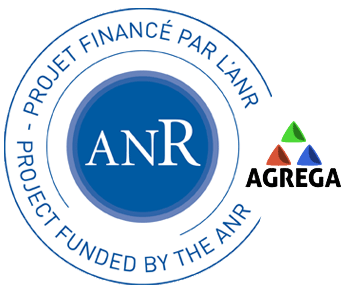Broceliande Grains
Pedigree matrix for LCA data quality
Weidema and Suhr Wesnaes (1996) proposed and applied a pedigree matrix to assess data quality in Lyfe Cycle Analysis (LCA). This matrix was modified by Ciroth (2008) to also address cost data quality issues for eco-efficiency measures.
The matrix is presented below.

Reliability
The ‘reliability indicator’ relates to the sources, acquisition methods and verification procedures used to obtain the data. The indicator is independent of the data quality goals: a decision made under the goal definition does not change the reliability of the data, and the score would be identical if the data were used in another study.
Completeness
The ‘completeness indicator’ relates to the statistical properties of the data: how representative is the sample, does the sample include a sufficient number of data and is the period adequate to even out normal fluctuations. As for the ‘reliability indicator’, the ‘completeness indicator’ relates to the properties of the sample itself, and is independent of the data quality goals of the particular study. The next three indicators all relate to the correlation between the data and the data quality goals concerning the technology or production conditions in a broad sense:
Temporal differences
The ‘temporal indicator’ represents the time correlation between the year of study (as stated in the data quality goals) and the year of the obtained data. As technology develops very quickly in certain industries, ten years difference between the year of study and the year of the data might cause the emissions and the production efficiency to be totally changed. Hence, the ‘temporal indicator’ is closely related to the data quality goals under the goal definition.
Geographical differences
The ‘geographical indicator’ illustrates the geographical correlation between the defined area (as stated in data quality goals) and the obtained data. The production methods and the production conditions can be very different in Norway (e.g. small scale agriculture), USA (large scale productions, modem technology) and the East-European countries (older technology).
Further technological differences
The ‘technological indicator’ is concerned with all other aspects of correlation than the temporal and geographical considerations. Although data may be of the desired age and representative of the desired geographical area, it may not be representative of the specific enterprises, processes or materials under study. Thus, it can be necessary to use data from related processes or materials, which in some instances can be regarded as preferable to older data or data from a different geographical area.
It is important to see the five indicators as characterising independent aspects of data quality. Obviously, data from a ‘wrong’ area may imply that a different technology is used. Nevertheless, this aspect is described under ‘geographical correlation’. The indicator ‘further technological correlation’ relates only to further differences occurring in spite of the data being of the same age and from the same geographical area.
References
Ciroth, A (2009) Cost data quality considerations for eco-efficiency measures, Ecological Economics 68(6) 1583-1590.
Weidema, B.P., 1998. Multi-user test of the data quality matrix for product life cycle inventory data. Int. J. LCA 3 (5), 259–265.
Weidema, B.P., Wesnæs, M.S., 1996. Data quality management for life cycle inventories — an example of using data quality indicators. J. Clean. Prod. 4, 167–174.
Frischknecht, R., et al., 2005. The ecoinvent database: overview and methodological framework. Int. J. LCA 10 (1), 3–9.
